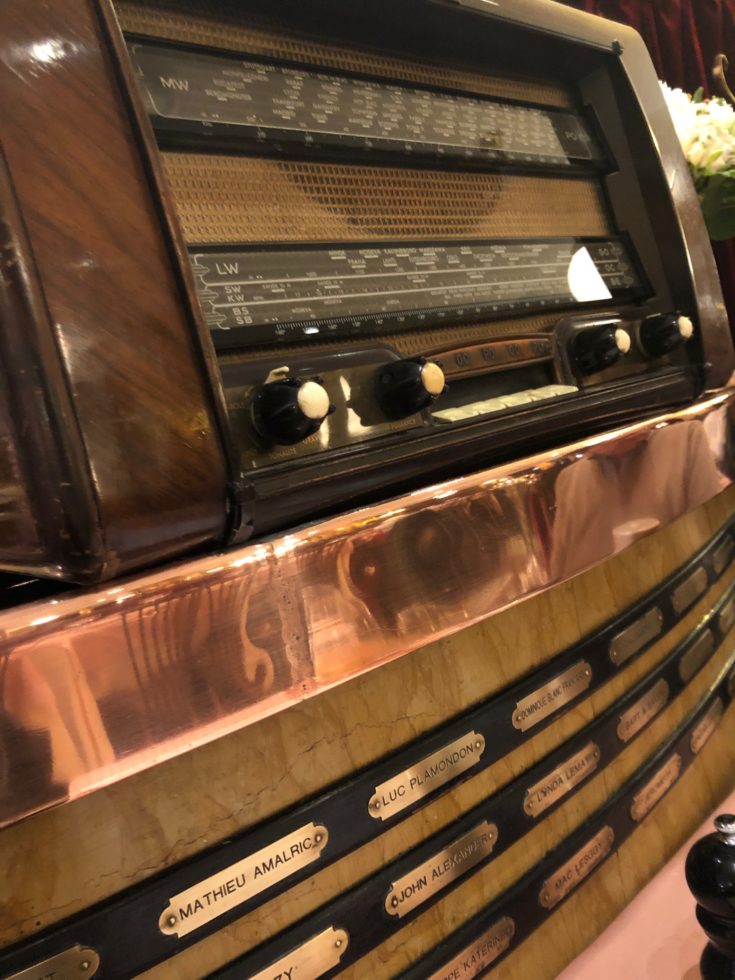La Poule au Pot, Paris | The Charming Reboot of a Storied Bistro, A-/B+
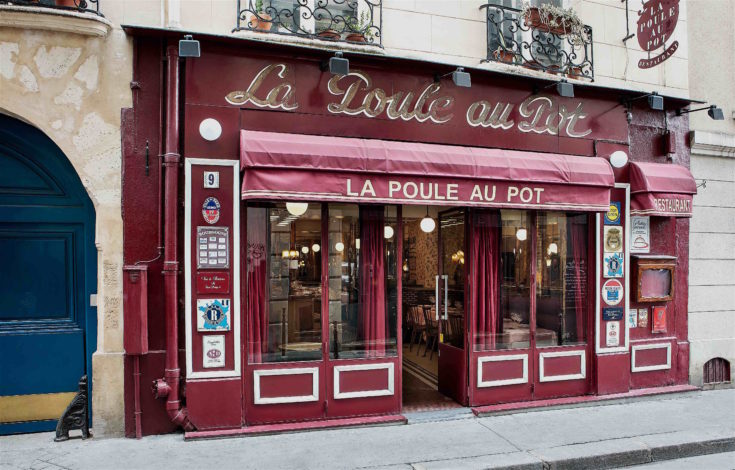
Tucked away in one of the ancient and atmospheric side streets that survived the massacre of Les Halles*, the great central food market that was once ‘the Belly of Paris,’ La Poule au Pot is a long-running address that once attracted a bon-vivant crowd of celebrities and night owls with a comforting version of the dish from which it takes it name. Now, happily, it’s been saved from becoming yet another clothing boutique or sandwich shop–the most common fate of any commercial space that changes hands here today, by talented chef Jean-Francois Piège. Piège, 47, has three other excellent restaurants in Paris–Restaurant Jean-Francois Piège, his gastronomic table; Clover Grill, a steakhouse that’s also near Les Halles; and Clover Green in Saint-Germain-des-Pres. This fourth restaurant, however, is the one that feels like the most personal expression of the chef and the traditional French cooking he loves.
I’ve been smitten by Piège’s cooking ever since I first discovered it back in the days when he was head chef at Les Ambassadeurs, the now-defunct restaurant of the Hotel de Crillon. If I loved the wit of his deconstructed spaghetti carbonara–a chunk of crispy pork belly accompanied by a fragile parmesan cartridge that contained the pasta, just napped with cooking water, butter and black pepper, and love what he does at eponymous his Michelin two star restaurant, La Poule au Pot is the table that most deliciously reveals this amiable chef.
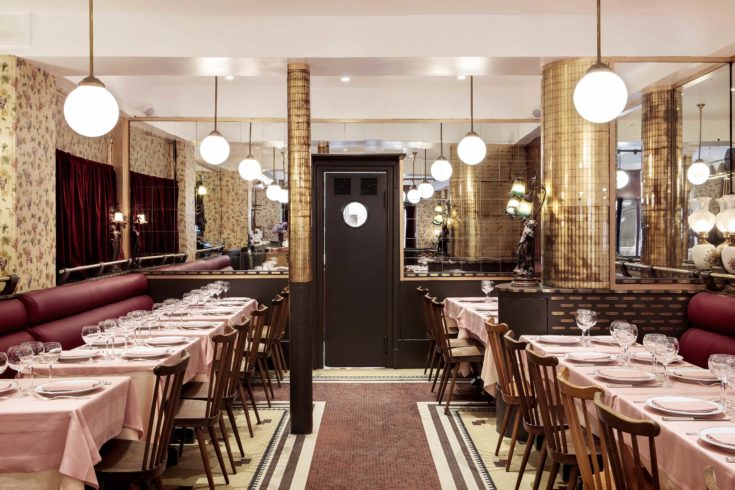
Chatting with the chef when I went for dinner with Bruno the other night, he told me, “My idea was to serve the food that I grew up eating in Valence. I love this cuisine bourgeoise French food, and this is a profoundly French restaurant.” To that end, he freshened up the old restaurant without jarring the wonderful 1950s ambience created by mirror-tile covered pillars, floral wall paper, a work-a-day tile floor, wooden chairs, or the big wooden-boxed table radio on the copper bar where little brass plaques bear the names of famous patrons of yore, many of them show-business people most English-speakers won’t know. Adding an amusingly populaire aural note to this mis-en-scene, the restaurant’s soundtrack is the seventies and eighties Pop music Piège grew up on, a detail I like, because it basically tells you, Don’t take this place too seriously–you’re here to have a good time. And we did, a very good time.
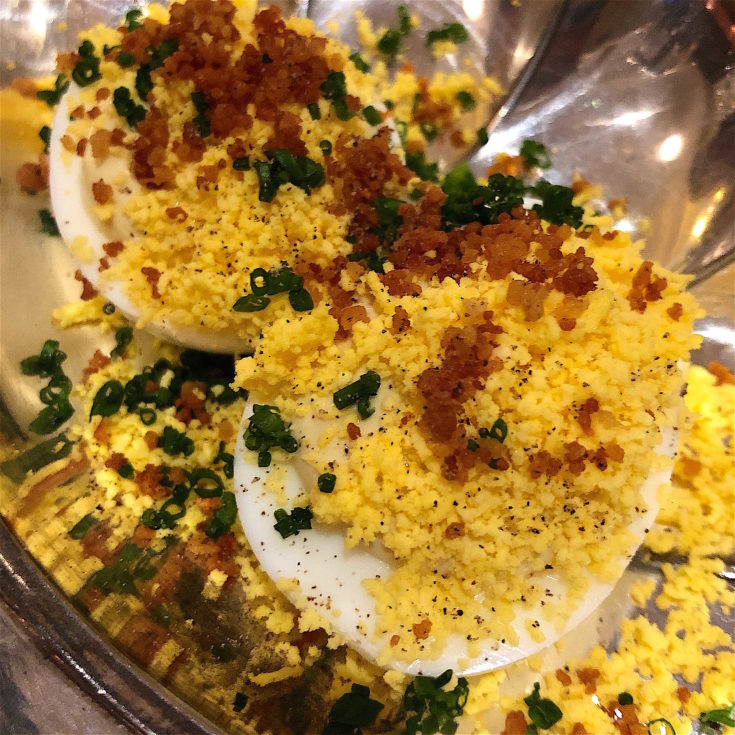
We were happily eating some oeufs mimosa–here stuffed eggs topped with riced egg yolk, chives, and finely chopped crackling, an excellent idea, with a flute of Champagne when all of a sudden a guest at the large table of ten on the wall across from us stood up and started singing opera. He had a beautiful voice, and he sang for a good five minutes, which stopped the restaurant in its tracks as patrons and waiters listened appreciatively. Who was he and why was he singing? I have no idea, but I did see a couple of excellent bottles of red Burgundy on the table where he was sitting. Beyond that, La Poule au Pot in its new version remains the same bastion of complicit conviviality that it’s always been, or a far cry from the kind of modern Paris bistro where the waiter feels that it’s incumbent upon him to explain the chef’s ‘concept.’

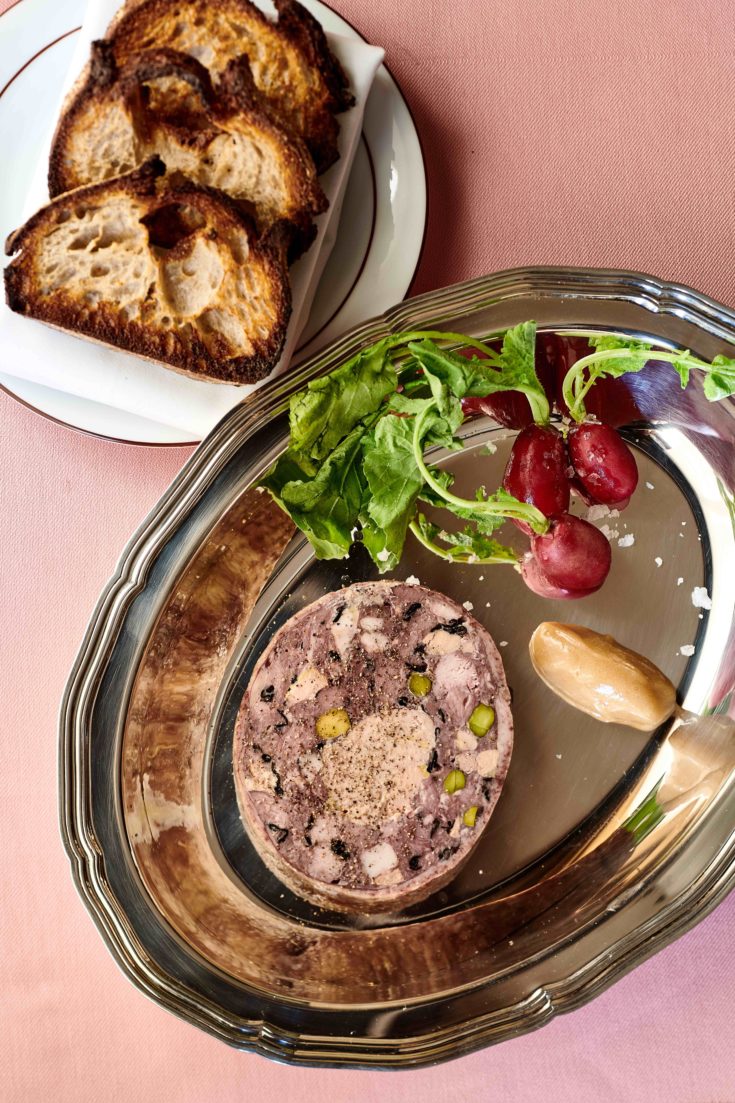
Looking at the menu, it was tough for us to decide what we would eat, since we pretty much wanted everything. But finally Bruno chose the split and roasted marrow bones and me the galantine de canard, a vieille France marvel that’s much too rarely seen on Paris menus these days. Bruno went into a sort of Cro-Magnon trance eating his bones, while I drifted off into a reverie of gastronomic content induced by the beautifully made and perfectly seasoned galantine, a coarse pistachio-studded fowl forcemeat surrounding a lobe of foie gras and garnished with radishes and a gorgeous amber gelee of deeply flavored duck stock.
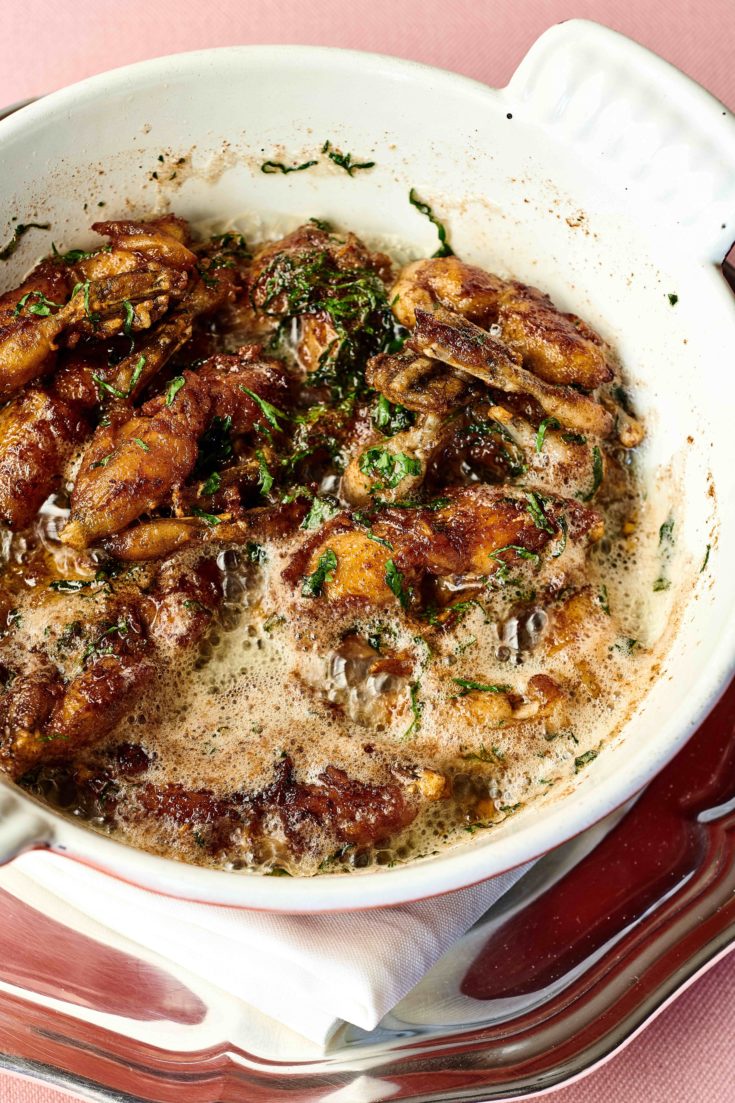
And because Piège is a reflexively generous man, a quality very much reflected by his cooking, he also sent out an order of frog’s legs en persillade (garlic, parsley, butter) for us to share. These succulent little morsels came from frogs raised in his native Drome, and they were tender and had the subtly mossy taste of a clean country pond.
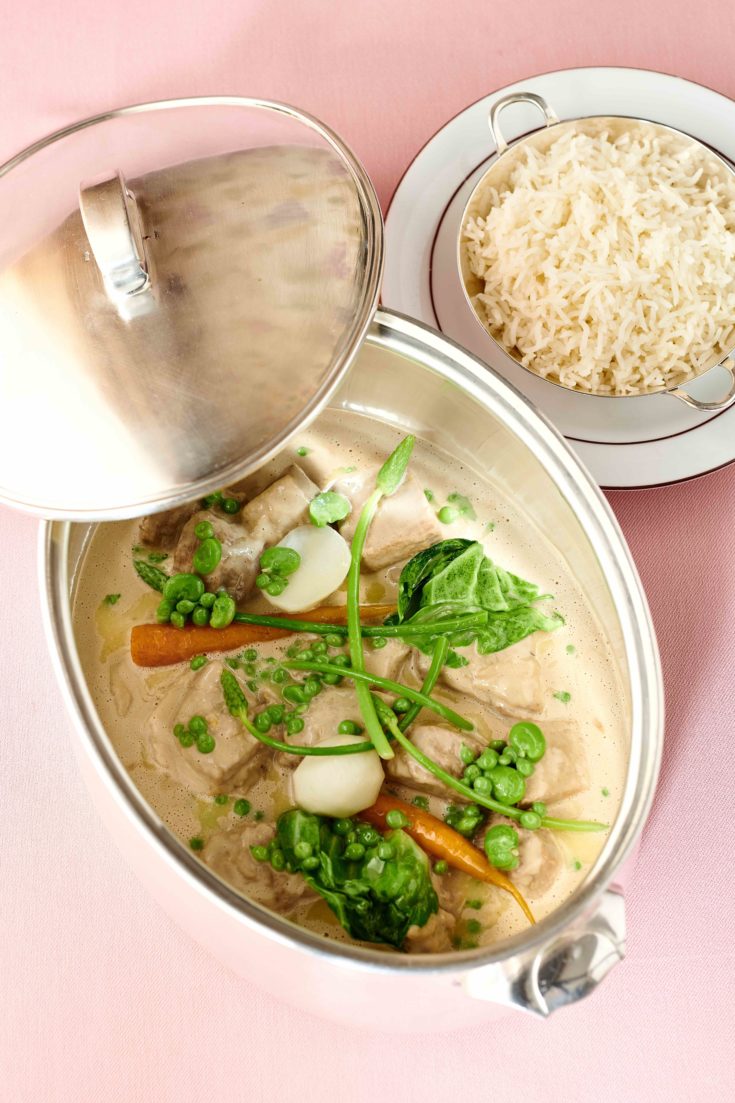
On the way to dinner, I had every intention of having the poule au pot, or chicken poached in bouillon with vegetables, but since Piège has sensibly decided to serve it only during the cooler months, I had a perfect excuse to zero in on the blanquette de veau–veal in a creamy sauce with baby vegetables and mushrooms, here served with steamed rice, although I was sorely tempted by the turbot with hollandaise sauce. This gentle beautifully made stew was as happy and consoling as a grandmother’s hug, too.
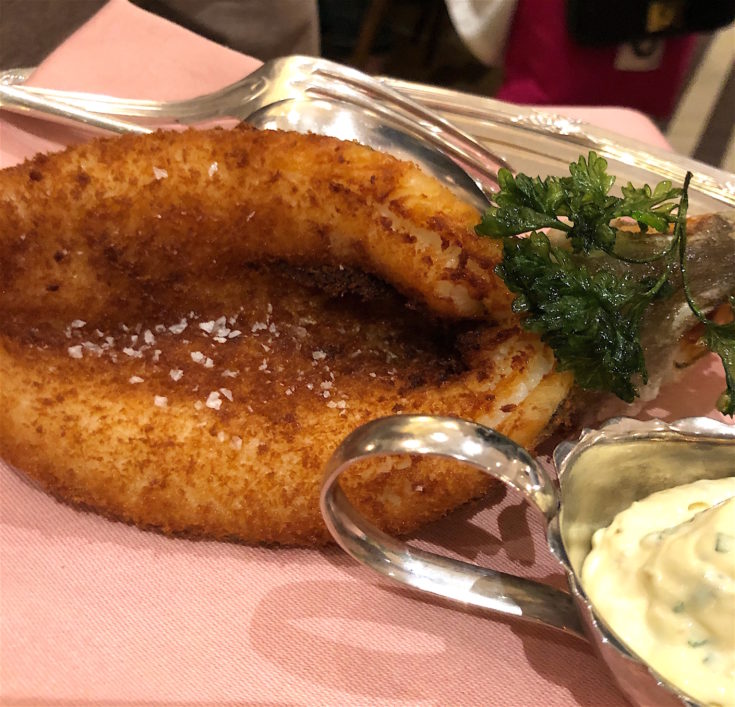
Meanwhile, after dithering between the veal sweetbreads with girolles and the merlan (whiting) frit, Bruno chose the latter, which came to the table with fried parsley and tartare sauce and was good eating on a warm summer night.
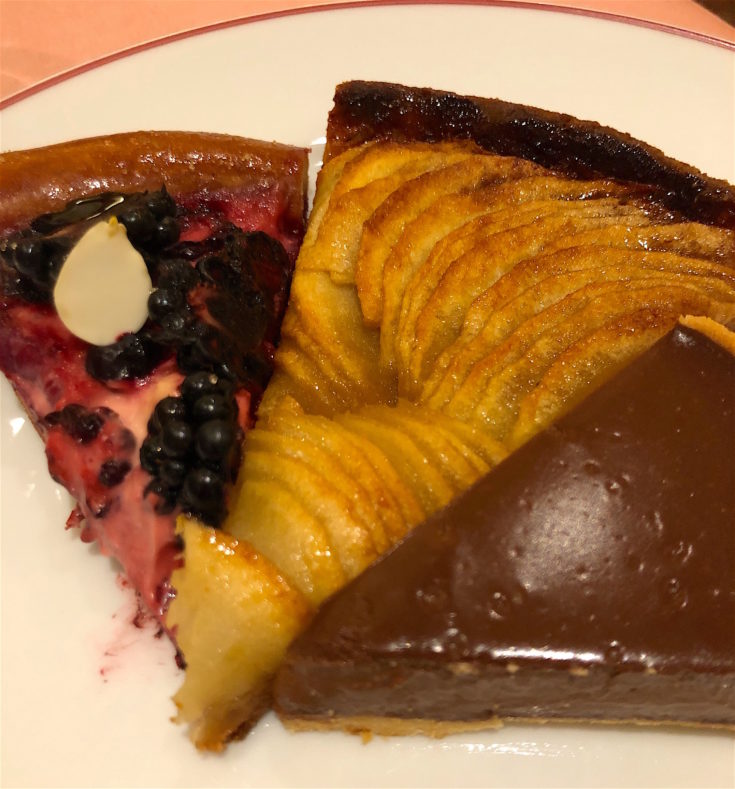
Dessert seemed a long shot for us after being so lavishly well-fed, but we decided to share the sampler of three tarts. This turned out to be a wise decision, too, since the apple tart was one of the best I’ve ever eaten, I loved the big juicy blackberries on another, and the chocolate tart had a gently bracing bitterness and was perfectly made.
“This was the food that made me move to France,” I told Piège at the end of our meal. “It’s the French food I like best, too,” he replied, bashfully but obviously happy to have created so much pleasure. Walking home on a summer night with a moon in the sky, I also wondered at how fresh this cooking seemed. But this just goes to show that if you live in Paris for over thirty years like I have, what’s old invariably and quite wonderfully becomes new again. On the fulcrum of great Gallic cooking, it’s the city’s old-school cooking that not only balances the new, but makes the new both possible and interesting until it stops being new, and you start craving the edible varities of tradition again.
*The original market, a handsome cluster of glass-and-cast-iron Baltard pavilions, was destroyed after Paris’s wholesale food businesses were moved to suburban Rungis in 1969 and a notably ugly ill-conceived urban renewal project built–a modern mostly subterranean retail mall and transport hub, on the site. It’s recently been renovated with an undulating yellow-lollipop glass roof, an arguable improvement, but the gardens that surround the mall are still a torn up mess, perhaps awaiting a final redesign when tycoon Francois Pinault’s new museum of modern art opens in the former Bourse du Commerce.
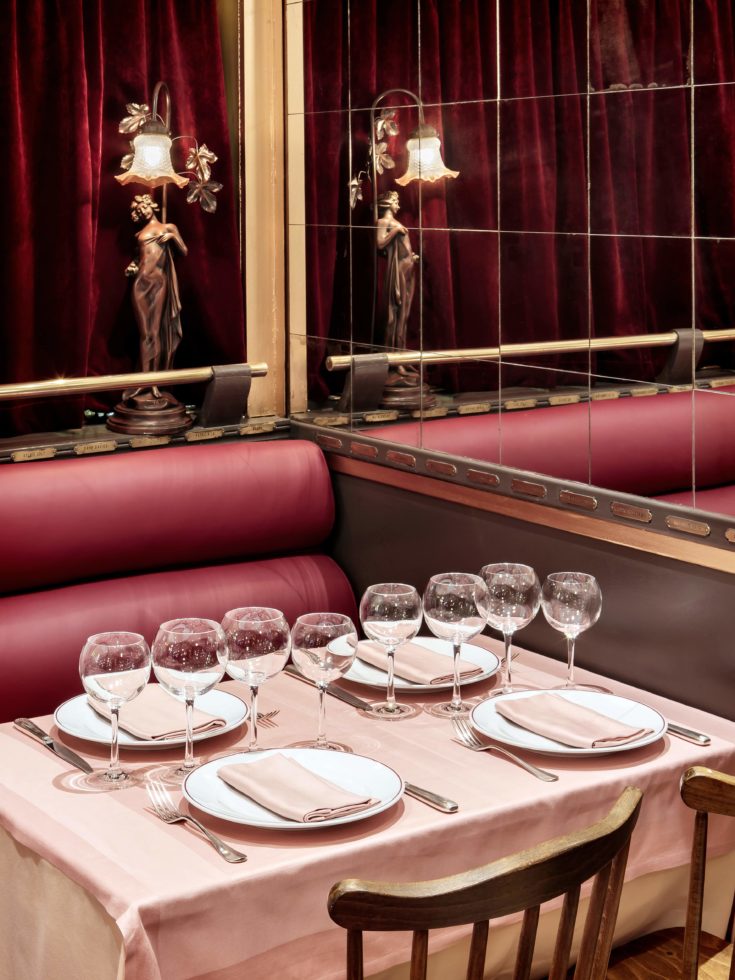
9 rue Vauvilliers, 1st Arrondissement, Paris, Tel. (33) 01-42-36-32-96. Metro: Les Halles or Louvre-Rivoli. Open daily. Prix-fixe menu 48 Euros. Average a la carte 75 Euros. www.jeanfrancoispiege.com
